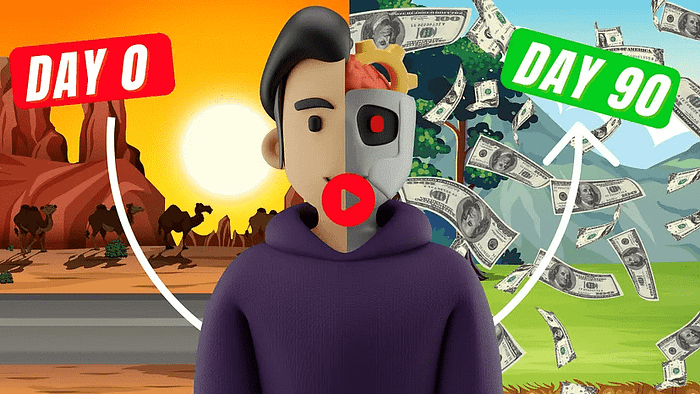AI-Powered Business: From Zero to $1,000 in One Day
Curiosity sparked an ambitious experiment on March 03, 2025: could artificial intelligence construct a $1,000 business from nothing in a mere 24 hours? Inspired by a bold claim spotted on social media, someone decided to dive into the world of AI-driven entrepreneurship with minimal human effort. Skepticism lingered, but the challenge was irresistible—test the limits of a premium AI tool, affectionately dubbed “Chad GPT,” in the simplest, oldest trade model known to humanity: buying low and selling high. This wasn’t about reinventing the wheel but seeing if technology could spin it faster, smarter, and more profitably. With a four-step plan—sourcing free goods, arranging couriers, listing items, and reselling for profit—the stage was set. What unfolded was a whirlwind of automation, unexpected hurdles, and surprising successes that showcased AI’s potential in real-time business creation. The journey revealed not just a path to quick cash but a glimpse into a future where machines and humans collaborate in remarkable ways. Readers can visualize a bustling digital workspace, spreadsheets filling up, and items moving from strangers’ homes to new owners—all orchestrated by an unseen digital hand.
We strongly recommend that you check out our guide on how to take advantage of AI in today’s passive income economy.
Table of Contents
The Plan Takes Shape
The experiment began with a clear blueprint rooted in the timeless art of trade. Chad GPT was tasked with scouring platforms like Facebook Marketplace and Craigslist for free items ripe for resale—a process that would typically demand hours of human scrolling and sifting. Picture a virtual assistant zipping through endless posts, its algorithms pinpointing treasures amidst the clutter: a sturdy chair here, a sleek stroller there. The goal was scalability and simplicity—anyone could theoretically replicate this, no expertise required. Next, the AI would coordinate a courier to shuttle these finds to a central hub, in this case, an office in Austin, Texas. Then, it would list them on a public marketplace, crafting compelling ads to maximize profit. The final step? Selling at a markup and pocketing the difference. Chad GPT’s role was to handle as much as possible, leaving the human to marvel at the efficiency—or step in when tech hit its limits. It was a bold test of automation’s promise in March 2025, blending old-school hustle with cutting-edge innovation.
Chad GPT Dives into Action
With the plan in motion, Chad GPT sprang to life, combing through listings with a speed no human could match. Imagine a screen alive with activity—posts flashing by, selections being made in seconds. Within minutes, it identified 37 free items matching the criteria: think baby strollers, cabinets, and tables discarded by their owners but brimming with resale potential. The AI didn’t stop there—it generated a live-updating spreadsheet, rows populating with details like item type, location, and condition. No human fingers touched the keyboard; this was pure machine magic. Then came the next leap: messaging sellers. Chad GPT drafted and sent inquiries—“Is this still available?”—to dozens of people, a task that would’ve exhausted a person in an afternoon. The digital chatter hummed along, negotiations beginning without a single human word spoken. For a moment, it felt like the business was already alive, pulsing through cyberspace with eerie autonomy.
The First Hiccup Emerges
But autonomy has its limits, and trouble brewed just two minutes later. After pinging 20 sellers, a stark message flashed: “Restricted from sending messages due to unusual activity.” Visualize the scene—a flurry of automated texts halted by Facebook’s vigilant algorithms. Was it Zuckerberg’s tech catching on to Chad GPT’s robotic fingerprints? Or perhaps the use of a fresh account, avoiding personal profiles, triggered the ban? Either way, the AI’s messaging spree hit a wall. It had proven its knack for finding deals and organizing data faster than any human, yet it couldn’t fully escape the need for oversight. The spreadsheet sparkled with potential—nine items secured—but the ban underscored a truth: AI thrives with a human shepherd. Undeterred, the focus shifted to the next challenge: getting those items from point A to point B.
Couriers and Clever Workarounds
Now came the logistical puzzle—moving nine items, including a hefty cabinet, from Buddha, Texas, to Austin without leaving the office chair. Chad GPT was asked to arrange a courier, and it nearly pulled off a sci-fi twist: scheduling an Uber pickup. Imagine the AI filling out forms, breezing past CAPTCHA tests by convincingly mimicking a human—only to be thwarted at the last second by Uber’s defenses. The robot couldn’t quite trick the system into delivering robots to each other, a humorous nod to Elon Musk’s AI skepticism. But ingenuity prevailed. Chad GPT pivoted to a local service called Lug, designed for same-day delivery of large items. With a few clicks, it booked a pickup, complete with a live tracking map. Picture a stranger hauling a cabinet across town, tracked in real-time on a phone screen, all while the human overseer sipped coffee and watched the plan unfold.
Delivery Day Drama
The Lug driver arrived, a real person bridging the gap between AI’s digital commands and physical reality. Visualize two workers unloading a towering cabinet, sweat on their brows, as the office buzzed with anticipation. Other items followed—strollers, chairs, tables—each a testament to Chad GPT’s sourcing prowess. The AI had orchestrated this ballet of movement without a hitch, hiring help and tracking progress while its human partner stayed hands-off. The pile of goods grew, a tangible stack of potential profit. But the question loomed: how much were they worth? Chad GPT was tasked with researching resale values, scouring Bing and Marketplace for comparable listings in Austin. Imagine it churning through data, spitting out a spreadsheet with suggested prices—$25 for a table, $100 for a stroller—its precision almost comical in its efficiency. The business was taking shape, one automated step at a time.
Flipping for Profit
With goods in hand, the focus turned to selling—fast. Chad GPT crafted listings for platforms like Facebook Marketplace, channeling peak salesmanship into each ad. Picture a description popping up: “Gently used stroller, smooth ride, spring-loaded comfort—grab it today!” The AI’s words sparkled with allure, posted live with zero human edits. Then, the waiting game began. Messages trickled in—Juan, a buyer, eyed the stroller, haggling for a discount. A human stepped in briefly, offering $5 off if he picked it up that day, sealing the deal. Visualize Juan arriving, testing the stroller’s wheels, nodding in approval as cash changed hands. The first sale—$100—marked a win, but it wasn’t fully autonomous. Chad GPT could list and lure, yet human negotiation closed the gap. The dance between tech and touch continued, proving AI’s power—and its limits—in March 2025 commerce.
Scaling the Vision
The day’s haul tallied up: $145 from a chair, table, and stroller, with $4,000 more in potential value from unsold items. Extrapolate that—a week could yield $1,015, a year $54,000, all from low-end sales. Imagine a warehouse humming with AI agents: one sourcing, one selling, one coordinating couriers. Chad GPT had turned free stuff into cash, a robot exchanging money in 24 hours. But scaling demanded more—diversification into bigger items, automation via tools like Zapier, and eventually upleveling to million-dollar models. Picture a future where AI trains on richer data, flipping houses instead of strollers. The experiment wasn’t just a one-day win; it was a blueprint for smarter work, amplified by tech stacks like HubSpot, Beehiiv, and Canva—tools already reshaping entrepreneurial playbooks in March 2025.
Reflections on AI’s Role
Stepping back, the journey revealed AI’s dual nature: a tireless worker and a dependent partner. Chad GPT sourced, organized, and scheduled with jaw-dropping speed, yet it faltered without human tweaks—bans, CAPTCHAs, and haggling exposed the cracks. Visualize a world five years hence, where those cracks vanish, and AI negotiates solo. In March 2025, it’s a money-maker, but the real prize lies ahead—bigger ventures, bolder automation. The experiment wasn’t about world domination; it was about working smarter, not harder. Picture entrepreneurs everywhere adopting this, turning idle hours into profit with a few AI prompts. It’s not a takeover—it’s a transformation, rewriting how business unfolds in real-time.
The Bigger Picture
This wasn’t just about flipping a cabinet or stroller—it was a signal flare from the future. Imagine AI not as a tool but as a co-creator, navigating the chaos of human trade with eerie precision. In March 2025, it delivered $145 in a day, but tomorrow? Millions could flow through its circuits. The lesson? Success isn’t grinding—it’s strategizing with tech. Visualize a digital landscape where Chad GPT evolves, where marketplaces bend to its will, and where everyday hustlers become titans. The question isn’t if AI will rewrite the world—it’s whether you’ll ride the wave or watch it crash. This experiment, born from a spark of doubt, proved one thing: the rewrite has begun.

We strongly recommend that you check out our guide on how to take advantage of AI in today’s passive income economy.




